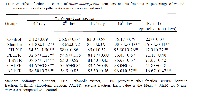Evaluation of wound healing properties of bioactive fractions from the extract of Butea monosperma (lam) stem bark.
Keywords:
Butea monosperma, Dead space wound, Excision wound, Incision woundAbstract
The study aims to evaluate the wound healing properties of bioactive fractions from the extract of Butea monosperma (Lam) stem bark. In this study the stem bark powder was extracted with ethanol, further the ethanolic extract was fractionated with different solvents (petroleum ether, benzene, chloroform and acetone) in increasing order of polarity. Thus prepared extracts were subjected to preliminary phytochemical analysis. The wound healing activity of the ethanolic extract and the fractions isolated from the stem bark of Butea monosperma were evaluated in excision, incision and dead space wound healing models using Albino wistar rats. The wound healing activity was assessed by the breaking strength in case of incision wounds, epithelialization and wound contraction in case of excision wound and granulation tissue dry weight, breaking strength and hydroxyproline content in case of dead space wound. The ethanolic extract and the acetone fraction showed the significant wound healing activity on all three wound models. The phytochemical investigations revealed the presence of alkaloids, tannins, flavonoids, phenolic compounds and steroids. The increased rate of wound contraction and hydroxyproline content in the ethanolic extract and the acetone fraction treated animals provides a scientific base to the ethno medicinal use of Butea monosperma, which is largely attributable to the additive or synergistic effect of their constituents.
References
Pierce GF, Mustoe TA.
Pharmacologic enhancement of
wound healing. Annu Rev Med.
;46:467–481.
Prasad D, Rao CM. Wound healing
profile of ketorolac, metronidazole
and tinidazole administered
postsurgically. Ind J Exp Biol.
;33:845–847.
Biswas TK and Mukherjee B. Plant
medicines of Indian origin for wound
healing activity: a review, Int J Low
Extrem Wounds. 2003;2;25-39.
Bandara BMR, Kumar NS,
Wimalasiri KMS. J.
Ethanopharmacol. 1989;25:73.
Bandara BMR, Kumar NS,
Wimalasiri KMS. J. Natl. Sci.Comu
(Sri Lanka). 1990;18:97.
Gunankkunru A, Padmanaban K,
Thirumal P, Pritila J, Parimala G,
Vengtesan N, Gunasekhar N,
Perianayagam JB, Sharma SK, Pillai
KK, et al. J. Ethanopharmacol.
;98:241-244.
Patil DA, Shubhangi Pawar, Patil
MV. Ethnobotany of Butea
monosperma (Lam.) in North
Maharashtra, India. Natural Product
Radiance. 2006;5(4):323-325.
Raj RK, Kurup PA. Anthelmintic
activity, toxicity and other
pharmacological properties of
palasonin, the active principle of
Butea frondosa seeds and its
piperazine salt. Indian J Med Res.
;56(12):1818-25.
Razdan MK, Kapila K, Bhide NK.
Antifertility effect and some
pharmacological actions of Butea
frondosa seed extracts. Indian J
Physiol Pharmacol. 1969
Oct;13(4):239-49.
Kasture VS, Chopde CT, Deshmukh
VK. Anticonvulsive activity of
Albizzia lebbeck, Hibiscus rosa
sinesis and Butea monosperma in
experimental animals. J
Ethnopharmacol. 2000 Jul;71(1-
:65-75.
Kasture VS, Deshmukh VK, Chopde
CT. Anxiolytic and anticonvulsive
activity of Sesbania grandiflora
leaves in experimental animals.
Phytother Res. 2002 Aug;16(5):455-
Carey M William, Krishna Mohan G.
Antiinflammatory and Analgesic
Activity of Butea monosperma
(Lam) Stem Bark in Experimental
Animals. Pharmacologyonline.
;2:88-94.
Muralidhar A, Sudhakar Babu K,
Ravi Shankar T, Reddanna P, Reddy
GV, Latha J. In vitro and In vivo
Anti Inflammatory Activity of Butea
monosperma Stem Bark Extract.
International Journal of Pharmacy &
Therapeutics. 2010;1(2):44-51.
Muralidhar A, Sudhakar Babu K,
Ravi Sankar T, Reddanna P, Reddy
GV, Latha J. Anti Inflammatory
Activity of Flavonoid faction isolated
from the stem bark of Butea
monosperma (Lam): A mechanism
based study. International Journal of
Phytopharmacology. 2010;1(2):124-
Sumitra M, Manikandan P, Suguna
L. Efficacy of Butea monosperma on
dermal wound healing in rats.
Journal of Biochemistry and Cell
Biology. 2005;37:566–573.
Harborne JB. Phytochemical
Methods: A guide to Modern
Techniques of Plant Analysis, 2nd
edition. London: Chapman and Hall;
;p 282.
OECD, 2002. Acute oral toxicity.
Acute oral toxic class method
guideline 423 adopted 23.03.1996.
In: Eleventh Addendum to the OECD
guidelines for the testing of
chemicals organisation for
economical co-operation and
development. Paris. June 2000.
Morton JJP, Malone MH. Evaluation
of vulnerary activity by an open
wound procedure in rats. Arch Int
Pharmacodyn. 1972;196:117-126.
Nayak SB, Raju SS, Eversley M,
Ramsubhag A. Evaluation of wound
healing activity of Lantana camara
L.- A Preclinical Study. Phytother
Res. 2009;23:241-5.
Ehrlich HP, Hunt TK. The effects of
cortisone and anabolic steroids on the
tensile strength of healing wounds.
Ann Surg. 1969Aug;170(2):203–206.
Lee KH. Studies on the mechanism
of action of salicylates III. Effect of
vitamin A on the wound healing
retardation action of aspirin. J
Pharma Sci. 1968 July;57(7):1238–
Nayak S, Rao SG, Murthy KD,
Somayaji SN, Bairy KL. Pyramid
environment reduces the wound
healing suppressant properties of
dexamethasone in albino rate. Indian
J Expt Biol. 2003Jun;41(6):645–648.
Neuman RE, Logan MA. The
determination of hydroxyproline, J
Biol Chem. 1950;184:299.
Whaley K and Burt AD.
Inflammation, Healing and Repair.
In: Muir's Textbook of Pathology,
MacSween, R.M.N. and K. Whaley
(Eds.). 13th Edn., Arnold, London
ISBN: 0340569573, 1996;p.112-165.
Cotran RS, Kumar V, Robbins SL
and Schoen FJ. Inflammation and
Repair. In: Robbins Pathologic Basis
of Disease, 5th Edn, W.B. Saunders
Company Pennsylvania. ISBN: 0-
-5032-5, 1994;p.51-92.
Mohan H. Inflammation and
Healing. In: Textbook of Pathology,
th Edn., Jaypee Brothers, New
Delhi, ISBN: 81-8061-368-2, 2005;p
-179.
Bairy KL, Rao CM. Wound healing
profile of Ginkgo biloba. J Natural
Remedies. 2001;1:25–27.
Azad S. Essentials of Surgery. Paras
Medical Publications, Hyderabad,
ISBN: 8181911180, 2002;p 1.
Swamy KH, Krishna V,
Shankarmurthy K, Rahiman AB,
Mankani KL, Mahadevan KM, et al.
Wound healing activity of embelin
isolated from the ethanol extract of
leaves of Embelia ribes Burm. J
Ethnopharmacol. 2007;109:529-34.
Harish, BG, Krishna V, Kumar HS,
Ahamed KB, Sharath R and Swamy
KH. Wound healing activity and
docking of glycogen-synthasekinase- 3-β-protein with isolated
triterpenoid lupeol in rats.
Phytomedicine. 2008;15:763-767.
Manjunatha BK. Wound healing
activity of Solanum violaceum Ortg.
Indian Drugs. 2006;43:835.



